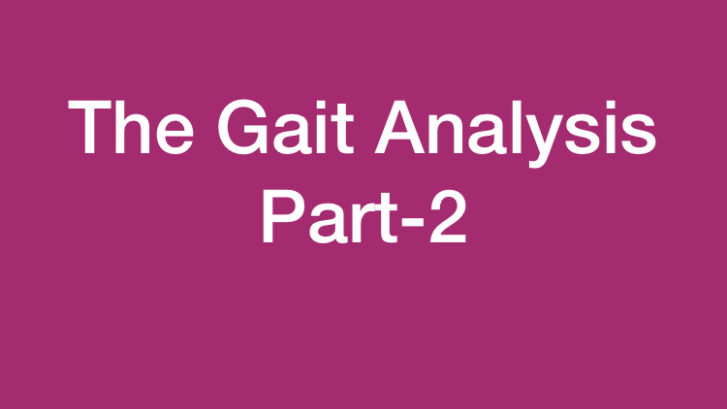The Gait Analysis Part-2
This is the second in a multi part series. If you missed part 1, click here.
here it’s quick review of gait cycle…There are two phases of gait: stance phase and swing phase.
Stance phase consists of:
Heel strike
Foot flat (Loading response)
Midstance
Terminal stancephase
Pre-swing
Swing phase:
initial (early) swing
mid swing
terminal (late) swing
Today we explore what’s happening during foot flat (Loading Response):
we remember that foot flat Loading response occurs when there is weight bearing on the loaded extremity from heel strike. This continues until the opposite foot is lifted for swing.
what is happening here at the major anatomical areas:
[restrict]
Foot:
Pronation begins: the coefficient of friction of the heel with the ground is great enough that pronation of the midfoot begins. As the calcaneus moves, the talus slides anteriorly and plantar flexes, adducts and everts which unlocks the subtalar joint and it is moving toward making its axis parallel with the calcaneo cuboid joint at midstance because of this motion, the calcaneus everts approximately 5°
from its main axis of rotation.
Ankle
The ankle plantar flexes 5-10 °. This motion is attenuated by eccentric action of the anterior compartment muscles of the lower leg this serves to absorb shock.
Knee:
Flexion to 15°. This is attenuated largely by the quadriceps, contracting eccentrically.
Hip:
The hip is at full flexion at loading response and now begins to extend. This is facilitated by a brief contraction of the gluteus maximus (which started at initial contact)
referances:
- A Three-dimensional Gait Analysis of People with Flat Arched Feet on an Ascending Slope -Kwon Kim, PT, PhD and Yun-Seop Lee, PT, PhD
- Cynthia norkins: joint structure and function
- The Pathokinesiology Service and the Physical Therapy Department. Observational Gait Analysis. Rancho Los Amigos National Rehabilitation Center, Downey, CA, 2001
[/restrict]
To read more register




Leave a Reply
Want to join the discussion?Feel free to contribute!